The ecommerce landscape for 2024 remains bright amid inflation, as nearly half (42%) of US consumers intend to spend more online over the next 12 months. The online shopping trends that will heavily influence purchasing decisions for 2024 are social commerce, conversational commerce, immersive shopping experiences, AI technology, data privacy, personalization, sustainability, and product value.
In this article, we discuss the current trends in online shopping that small business owners need to be aware of and what they can do to stay on top of it.
Key Takeaways:
- The ecommerce landscape is rapidly changing, so small businesses need to adapt.
- Shoppers are on social media all the time.
- Shoppers LOVE using technology like chatbots, smart speakers, augmented reality (AR), and virtual reality (VR).
- Shoppers want to buy from brands that share their values and have clear sustainability efforts.
- While shoppers prefer to shop online than in person, they still crave the personal touch. They like (and demand) personalized offers from brands they shop from.
1. Shoppers are shopping on social media more and more
Make no mistake about it—social is the new search and checkout counter. Social commerce is one of the biggest online shopping trends reshaping the ecommerce landscape, with social commerce sales predicted to reach nearly $3 trillion by 2026.
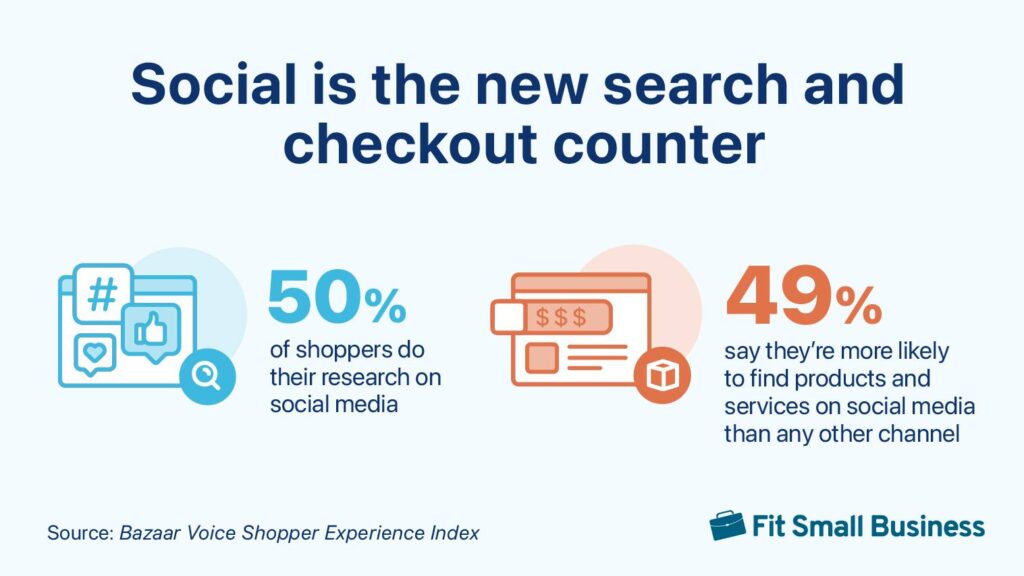
Consumers are not just shopping directly on social media, they are making it their new Google. A whopping 50% of shoppers do their research on social media, with 49% saying they’re more likely to find products and services on social media than any other channel.
Convenience is the primary driver of why consumers shop online. The ability to shop directly on social channels is not just convenient, but it also allows consumers to stay engaged on their preferred social apps without needing to switch to another app if they want to buy something they see on their feed.
Livestream videos, in-feed product catalogs, shoppable videos, and one-click checkouts are social commerce features that are shaping the future of online shopping and ecommerce.
This only means one thing—the time to capitalize on social is now.
What You Can Do About It:
- Be social! If you haven’t yet, establish your brand’s presence on social media channels. It’s a great avenue to connect with your audience and listen to consumers. Take advantage of features like livestream videos to further engage with shoppers.
- Sell on social. Facebook, Instagram, Pinterest, and TikTok currently have native integrations with most ecommerce platforms that allow you to easily set up shop and sell.
- Promote on social. While email is still the best way to reach your customers, don’t forget that people discover products on social media these days. Make sure to include social media marketing in your ecommerce marketing strategy.
- Set up convenience features like one-click checkout to maximize conversion from your shoppable channels.
TikTok is changing the social commerce landscape, making livestream shopping and shoppable videos mainstream. With TikTok Shop launching in the US, we can only predict how online sales will go for brands that have been shifting gears and focusing their marketing efforts on the platform, on top of selling on TikTok, too.
2. Shoppers embrace technology when making online purchases
Don’t be afraid to use technology in running your online store. Shoppers are increasingly using technology, such as chatbots and smart speakers, to purchase items online. AR, VR, and 3D are tools that make online shopping easier, and consumers are actually looking forward to using them more regularly.
Conversational Commerce
For example, shoppers’ interactions with chatbots are on the rise. This is not surprising as studies have shown that 64% of consumers would rather message than call a business.
Retail experts even foresee that shoppers will actually talk less with humans as they shop, engaging in conversational commerce instead.
The majority of shoppers (76%) are open to using chatbots and AI assistants when they shop, and nearly half (45%) trust the answers they will get from these tech assistants.
Voice shopping via smart speakers, or voice commerce, is another one of the biggest online shopping trends in conversational commerce. Voice assistant devices are expected to reach 8.4 billion this year, almost double the amount in 2020. And similar to how consumers use social media, smart speaker owners do everything with their devices—from browsing new products, creating shopping lists, and purchasing items. A study found that approximately 39% of respondents consult their assistant (the smart speaker) when shopping.
What You Can Do About It:
- Use chatbots to provide 24/7 customer support to shoppers. Employ AI chatbots so you can build their answers yourself. Learn more about the best AI chatbots for customer service.
- Aside from optimizing your store for SEO, optimize for natural language patterns. You can start by asking yourself how real people—not algorithms—might ask or search for your products. For example, if you are selling newborn baby products, your SEO keywords would likely be about car seats, breastfeeding equipment, and more. For voice assistants, people would usually just ask, “What are the things I need for a new baby?”
Sephora has long been capitalizing on technology, employing chatbots on their website to interact, help, and learn from their shoppers.
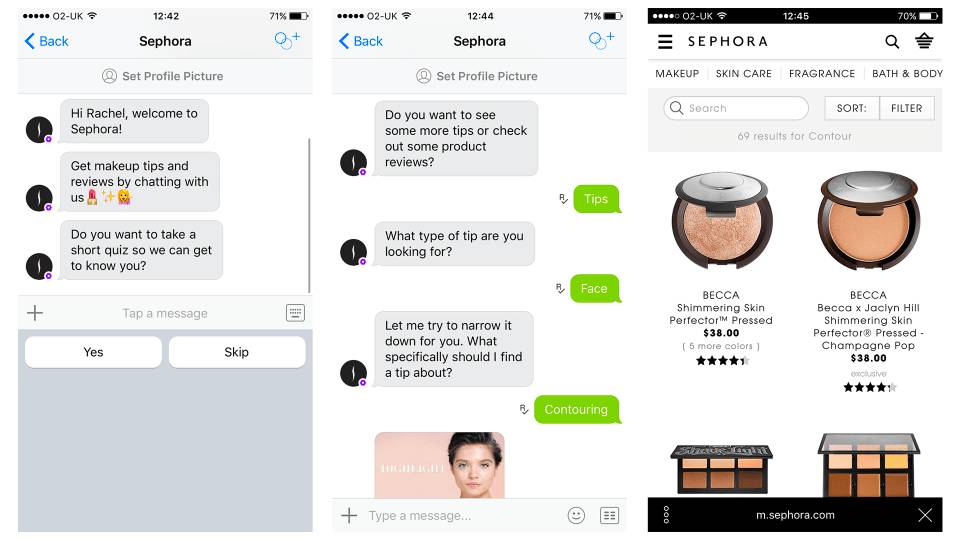
Immersive Shopping Experiences
A downside when shopping online is not being able to “try before you buy” a product. Thanks to technology, virtual immersive shopping experiences can now happen. AR and VR are closing the gap between physical and virtual stores and help resolve uncertainty related to online purchases and minimize returns.
Eighty percent of shoppers feel more confident in their purchases when using these immersive technologies, and 66% of those who use AR are less likely to return their purchases.
What You Can Do About It:
- Consider adding AR/VR technology to your online shop. Allowing them to see products on themselves, or how they look like in a virtual setting, can help in their purchasing decisions. For example, a virtual fitting room for an online clothing store can help minimize returns as shoppers can “try items before they buy.”
Ecommerce giant Amazon has capitalized on technology by introducing an AR feature for their Amazon Home offerings. In the Amazon mobile app, you can click on the camera icon beside the search bar to “try out” a product and see how it looks in an area of your home.

Related:
3. Shoppers are reassessing product value amid inflation
Inflation greatly impacted how people shop and spend their money. They are choosing to buy and spend less on products, particularly for purchases that are practical (56%), delayable (61%), and nonessential (77%).
It is worth noting, though, that consumers are not putting a halt on spending—they are simply more mindful of the value of what they purchase. The Mintel 2024 Global Consumer Trends report predicts that more consumers will reassess what matters most to them, evaluating not only what they want and need, but their perception of what constitutes value.
What You Can Do About It:
As shoppers tighten their belts and are more discerning about purchases, make it easier for them to compare prices and see the value of your offerings.
- Add in more promotional deals like discounts, cross-sales, bundles, or budget-priced products to meet consumers’ shifting needs.
- Allow shoppers to easily compare prices across your products by adding a filter view to your product catalog or having a comparison table on product pages.
- Optimize your returns process to make it easy for customers.
- Create a loyalty program to reward shoppers with exclusive discounts or free products.
4. Shoppers prioritize brands with sustainable products
Another one of the biggest online shopping trends is a significant shift toward sustainability and social responsibility among consumers. They prefer and support brands prioritizing eco-friendly practices, ethical sourcing, and social causes.
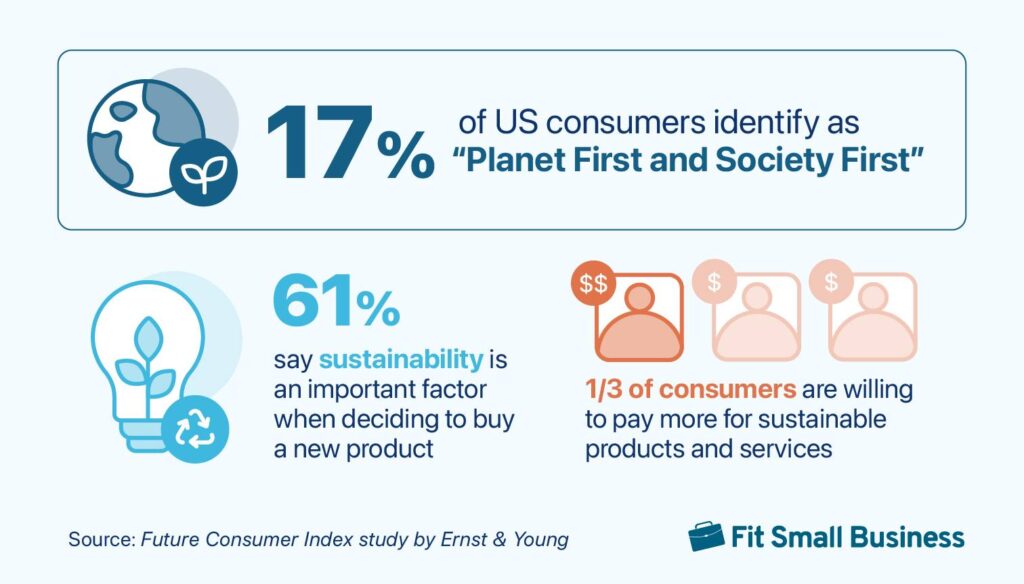
According to the benchmark Future Consumer Index study by Ernst & Young, 17% of US consumers identify as “Planet First and Society First.” It is evident that consumers are becoming more aware and purpose-oriented, with 76% saying they recycle and reuse packaging and products, and 67% confirming having adopted reusable shopping bags.
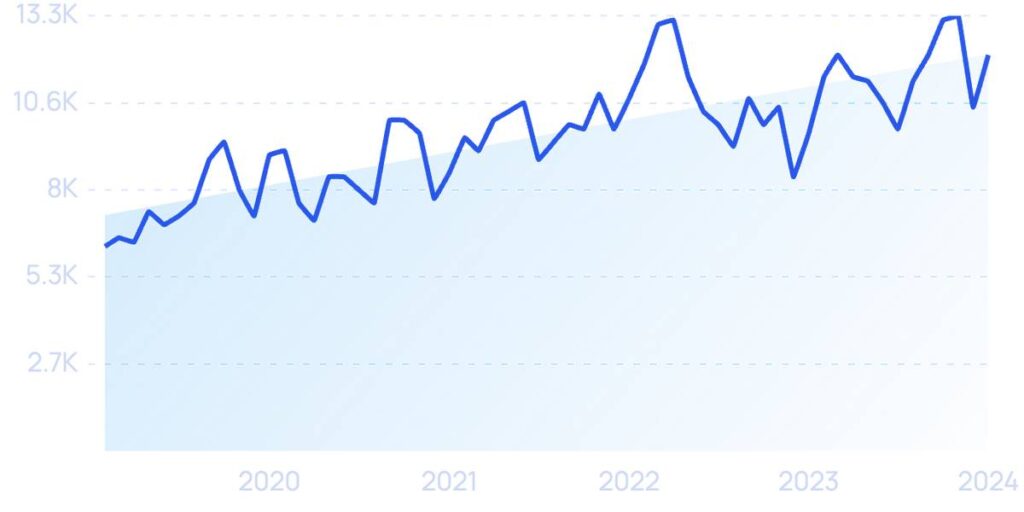
Searches for “sustainable packaging” have increased by 94% over the last five years. (Source: Google Trends)
Why is all this important? According to the 2021 Global Sustainability Study, 61% of consumers say sustainability is an important factor when deciding to buy a new product, and over a third are willing to pay more for sustainable products and services.
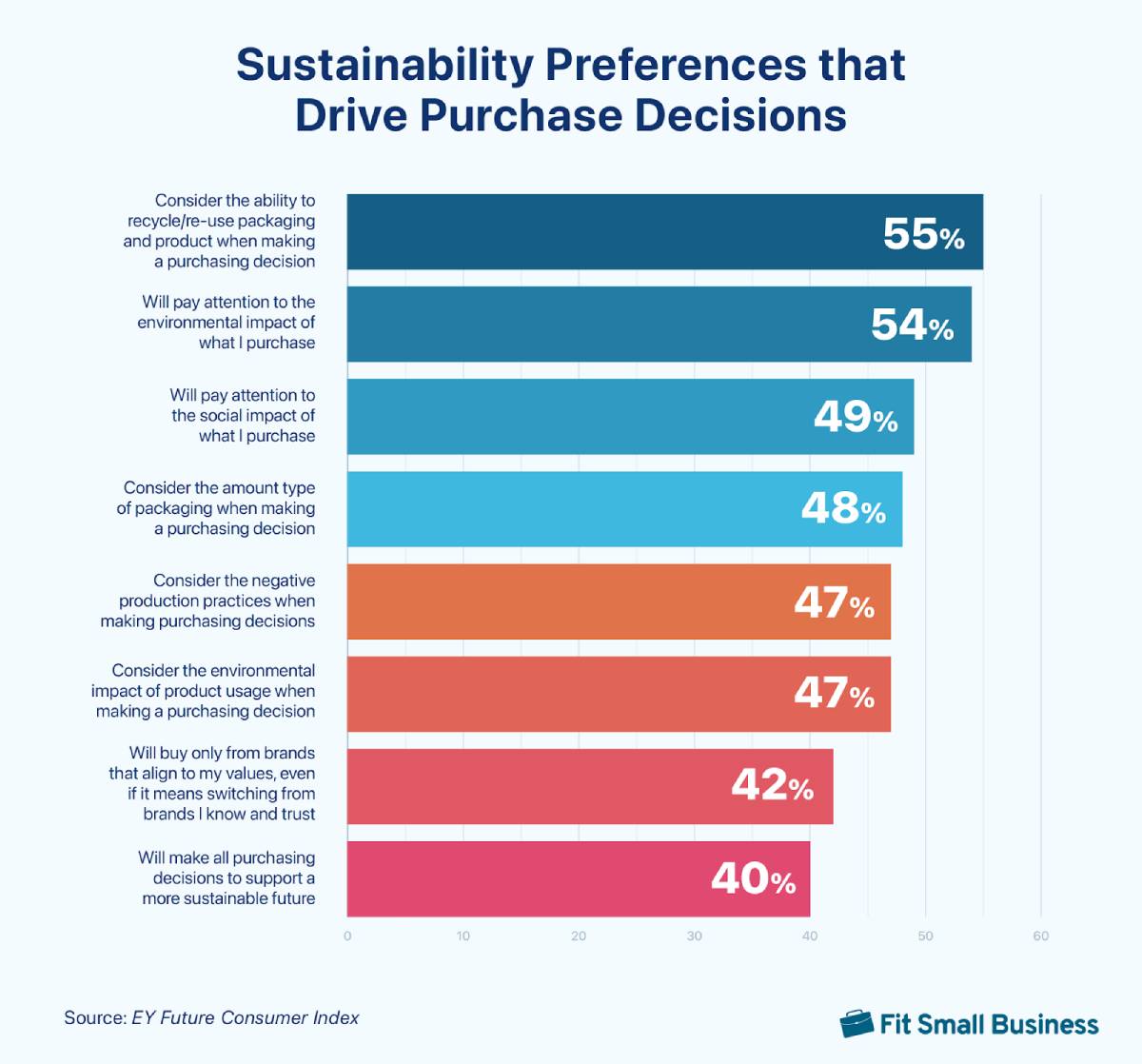
What You Can Do About It:
- Commit to a social cause, and ensure your customers know about your brand values.
- Invest in green innovations like low-waste business practices, non-polluting manufacturing, and biodegradable packaging to increase customer loyalty.
Related:
5. Shoppers value data privacy and transparency
Shoppers take their data privacy seriously and value transparency with how their data is handled. Seventy-six percent of consumers in a KPMG survey wanted greater company transparency about how their data is used.
Moreover, a McKinsey study found that for 85% of respondents, knowing a company’s data policies is important before making a purchase. Forty-six percent said they often or always consider switching brands when data policies are unclear or aren’t divulged.
What You Can Do About It:
- Never sell your customers’ information.
- Ensure your website has strict security practices in place to protect customer data.
Related:
- What Is a Secure Payment System? Small Business Guide
- Ecommerce Payment Security: 10 Small Business Best Practices
6. (But) Shoppers also expect personalized shopping experiences
Even with concerns about their data privacy, consumers expect sellers to know their preferences and keep this information in mind when communicating with them.
According to a 3Radical study, 64% of consumers expect retailers to tailor offers to them, and more than half (52%) experience frustration when they receive irrelevant communications.
And take this—lack of personalization will cost your business. Forty-two percent of consumers would be less likely to shop with brands that didn’t deliver personalized communications.
What You Can Do About It:
- Collect data on your customer’s spending habits. Purchase history can help you personalize your offers and emails. Look into your retail metrics.
- Segment customers for email marketing for personalized emails. Automation will help make this go faster.
Related: Personalization in Retail: Ultimate Small Business Guide
Bottom Line
The recent trends in online shopping revolve around technology integration to enhance the online shopping experience, an increased sense of social and environmental responsibility, and a shift toward personalization and value.
Online businesses need to innovate and adapt to these current online shopping trends to be able to stay competitive in the ecommerce industry.